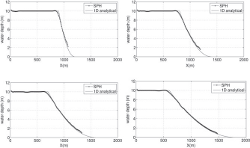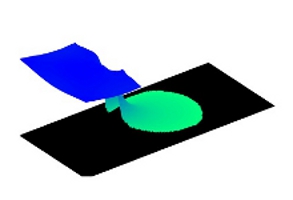







From SPHYSICS
| Line 3: | Line 3: | ||
Here, the SPHysics numerical scheme, originally developed to solve Navier-Stokes Equations has been extended to shallow water equations. | Here, the SPHysics numerical scheme, originally developed to solve Navier-Stokes Equations has been extended to shallow water equations. | ||
| − | Key | + | Key code features: |
* Inlet-Outlet open boundaries | * Inlet-Outlet open boundaries | ||
| Line 41: | Line 41: | ||
|} | |} | ||
| − | How to reference SWE-SPHysics | + | How to reference: '''[[SPHYSICS Reference| How to reference SWE-SPHysics]]'''. |
Revision as of 22:15, 12 February 2014
The two-dimensional shallow-water equations (SWEs) are widely used to approximate flows for a wide range of rapidly (and slowly) varying free-surface flows, such as dam breaks, river flooding, and tidal flows including storm surge and wave overtopping causing inundation in estuaries and coastal regions. Grid-based solvers are now widely available. Although accurate and robust wetting and drying routines have been developed, grid-based solvers are limited in simulating multi-phase effects, most importantly flows with rapid distortion in flood modelling. Particle methods are quite flexible in this respect and are also naturally adaptive for modelling complex domains.
Here, the SPHysics numerical scheme, originally developed to solve Navier-Stokes Equations has been extended to shallow water equations.
Key code features:
- Inlet-Outlet open boundaries
- Modified Virtual Boundary Particle (MVBP) to represent solid boundaries
- Particle splitting to provide finer resolution
- Particle splitting and variable h
- Water depth (or density evaluation)
- Bed Topography Representation
- Viscosity & Stabilisation terms
The code comes with the following test cases:
1-D Test Cases
|
2-D Test Cases
|
How to reference: How to reference SWE-SPHysics.

